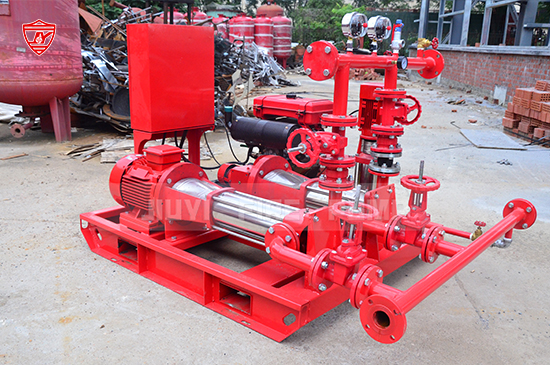When a fire pump won’t start, it's a serious issue that could compromise the entire fire protection system. Whether it’s an electric or diesel engine fire pump, prompt troubleshooting is crucial to identify the root cause and restore operation. This guide outlines the most common causes and solutions when dealing with a fire pump that fails to start.

For electric fire pumps, always begin with the power source:
Ensure the power is ON and properly connected to the controller.
Check for blown fuses, tripped breakers, or loose connections.
Verify the controller is in AUTO mode, not OFF or MANUAL.
Low or fluctuating voltage can prevent the motor from starting. Use a multimeter to confirm voltage levels.
The fire pump controller is the brain of the system:
Look for alarm indicators or fault messages on the controller panel.
Check that the start signal from the pressure switch is reaching the controller.
Reset the controller and attempt to start the pump again.
Fire pumps are typically triggered by a drop in pressure. If the system pressure remains too high, the pump won’t start.
Inspect the jockey pump—it may be keeping the pressure too high.
Confirm the start pressure setting on the controller aligns with your fire system design.
If you're using a diesel fire pump, additional factors may apply:
Battery voltage too low? Check the batteries and charger.
Fuel issues such as clogged lines, air locks, or contaminated fuel.
Ensure the engine control panel and sensors are working properly.
Check the coolant and oil levels—most diesel pumps won't start if levels are too low.
If the pump does not receive a start command:
Check the pressure switch wiring and contacts.
Use a simulator or manually drop pressure to test the response.
Inspect wiring between the fire alarm panel, controller, and pump.
Sometimes the problem is mechanical:
Check for pump shaft seizure or impeller blockages.
Rotate the shaft manually (if possible) to ensure it's free.
Listen for unusual noises or resistance during startup attempts.
Many fire pump failures are preventable. Establish a maintenance schedule to:
Test the fire pump weekly under no-flow conditions.
Check and log pressure readings, battery levels, and controller settings.
Replace worn parts and test automatic start features regularly.
A fire pump not starting can be caused by electrical faults, controller issues, fuel problems, or even incorrect settings. Systematic troubleshooting can help you isolate the issue quickly and restore your fire protection system’s reliability. If problems persist, consult a professional technician or the pump manufacturer for assistance.